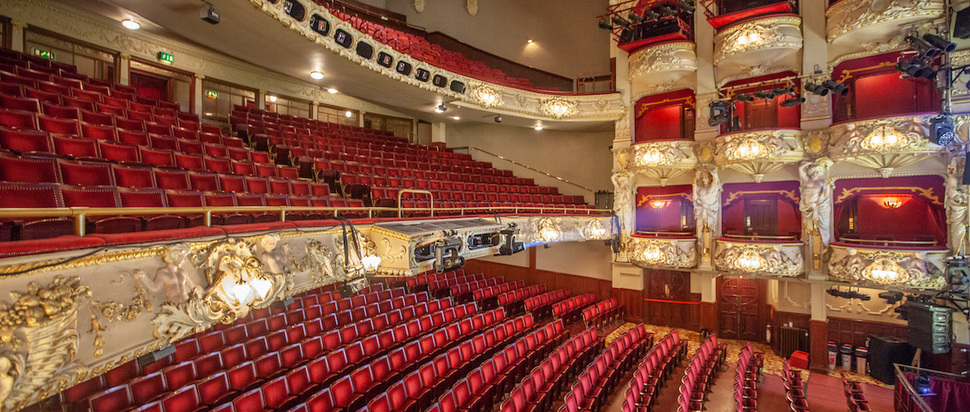What's Next for Scotland's Theatres?
Pubs, restaurants, gyms and indoor leisure centres have all opened up for business again this summer. It is essential that theatres, bound by strict social distancing stipulations, don't get left behind
Just a few short months ago, I contributed an optimistic piece for The Skinny's March issue titled Why Theatre Will Recover from COVID-19. Recounting the various times in history when theatres in the UK had struggled to survive, I put a positive spin on the 15-month blackout the industry has been experiencing. Look at all the challenges we've overcome in the past, I pointed out. Despite the obstacles pitted throughout our history, Scotland has maintained a theatre and performing arts scene that is unrivalled anywhere else in the world.
But as other industries prepare for a summer that will hopefully be "something much more like normality", as Nicola Sturgeon put it, theatres in Scotland have been dealt another blow. Andy Arnold, the Artistic Director of Glasgow's Tron Theatre, identified the issues in a statement that was released by the Tron at the end of April: "[In terms of reopening]... performing arts venues, theatres and concert halls are at the end of the line, and we accept that," he stated. "The government guidelines say that at Level Two, performing arts venues can open with a maximum capacity of 100 people and that at Level Zero – anticipated by summer – our capacities can stretch to 300. This is excellent – our artists and audiences have been waiting a long time. Only there is a major catch. The stipulations venues must apply are more severe than ever before."
The strict requirements theatres will be expected to adhere to include a 2.5 metre distance between ticket holders and a 2.6 metre distance between performers. Putting aside the creative implications of these guidelines, such a model will make it economically unfeasible for many venues to reopen. According to Arnold, the stipulations would mean the Tron's "230 seat auditorium would only be able to accommodate ten ticket holders". The Federation of Scottish Theatre and 11 of Scotland's leading performing arts venues, including the Tron, have called on the Scottish government to reconsider. In a recent survey conducted by the Federation, 96% of members responded that it is not economically viable for them to reopen while that level of social distancing is required.
In his statement, Andy Arnold points out a contradiction in Scotland's recovery plan – the fact that businesses in the hospitality industry are required to apply a one metre distance between customers. As such, he says, a pre-drink before a show could see eight friends "facing and talking to each other, maskless and a metre apart" before heading into a "large and fully ventilated auditorium" to sit "five seats apart with masks on, all facing the same direction" with a handful of others. If the stipulations are being implemented in the name of safety, then why are the distancing guidelines more extreme for theatres than they are for bars?
The double standard here highlights a bigger issue. We must begin to regard spaces where we can collectively experience art as just as essential to our well-being as leisure facilities, pubs, cafes and restaurants. As the playwright Peter Arnott argued in his 'Arts Manifesto' for Bella Caledonia in March – we need to fight for "the consensus that arts activity is a national 'good', that sits alongside health and education as elements of what we are beginning to call 'well-being".
By proffering different social distancing guidelines for the hospitality sector and our performing art venues, the Scottish government is essentially saying that it's more worthwhile to take a public health risk in the pursuit of collective 'well-being' in our boozers and eateries than in the places where we experience art. It may well be true that we should not be gathering in indoor spaces without a two metre distance between us anytime soon. But in that case, that stipulation should be extended across all sectors – and theatres unable to open due to it should be able to access financial support.
I would go one step further and argue that relief funds from the government until it is safe for theatres to reopen at a higher capacity wouldn't be going far enough. We are undoubtedly entering a difficult period of slow and arduous 'recovery' – it could be years before we see the kind of audiences that flooded into theatres pre-pandemic return.
Some of the greatest theatrical institutions we have were created following the invention of the Scottish and English Arts councils, which were in turn established after the devastating impact of World War Two. After that global crisis decimated cultural life here, the government saw investing in the arts as a necessary step towards rebuilding it.
Thanks to that radical but sensible decision – to see art as an essential public utility, like health, education and transport – we now have the Edinburgh International Festival, the Royal Shakespeare Company and the National Theatre of Scotland. Today, the government must take a similarly progressive action if we truly want to see creativity in Scotland not just survive, but thrive.
